The 22nd
LaureatePainting
Enrico Castellani
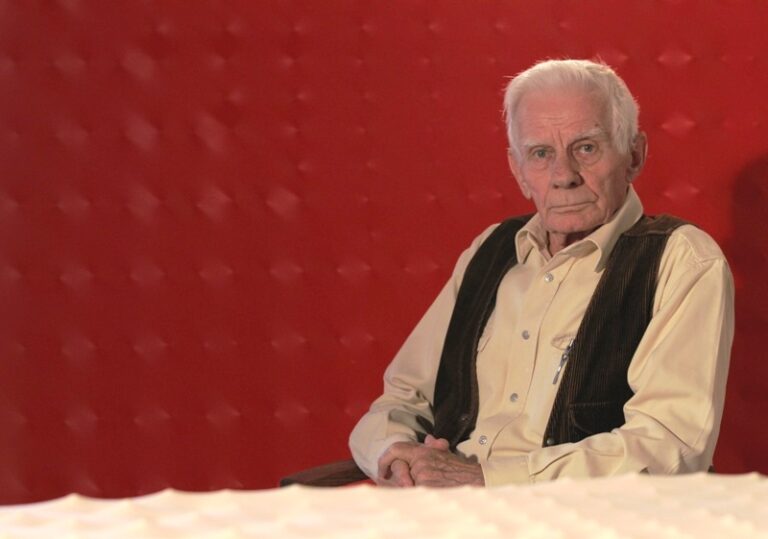
For more than 50 years Italian artist,Enrico Castellani has been producing three-dimensional works created by using a nail gun on both sides of his canvases. The surface of these ‘paintings of light’with their alternating depressions and raised areas,will,if lighted,induce exquisite light and shade effects,that can be interpreted according to one’s own perception and psychology. Castellani says,“My works exist for their own sakes and are not meant to convey any message." Although born in Castelmassa in North-Eastern Italy,he studied sculpture,painting and architecture in Belgium. On his return to Italy,he and artist Piero Manzoni founded Galleria Azimut and the journal Azimuth to promote avant-garde art. In 1959,he executed his first Superficie Nera in Rilievo (Black Surface in Relief) ; its three dimensional expression becoming the defining characteristic of all his work. He has exhibited internationally,including participation in the Venice Biannale (1966) and more recently to the Prada Foundation in Milan (2001) and the Pushkin Museum in Moscow (2005).
Biography
Enrico Castellani is best known for his 'paintings of light '; canvases that have been fired on from both sides with a nail gun,producing a deeply textured,three dimensional surface. These canvases with their deeply marked surfaces may have a mechanical edge to them but if lit,will reveal an exquisite landscape of light and shade that Castellani wants to be interpreted by everyone according to their own experiences,perception and psychology. "My works exist for their own sake and are not meant to convey any message. They are made for not expressing anything," he says.
Castellani often works in monochrome because he says he prefers colors that are not bound to express human memories or emotions. "I do not want to show human sentiment on the surface. " He has made this avoidance of the artist’s subjectivity his works ' guiding philosophy,one that he has adhered to for the past 50 years.
Born in Castelmassa in North-Eastern Italy,he studied sculpture and painting at Brussels Academy of Arts and architecture at Ecole Nationale Superieure in Belgium. He returned to Italy in 1956 and he met Lucio Fontana,a Spatialism artist who was a leading light in the Italian art world after the war. With artist Piero Manzoni,he founded Galleria Azimut in Milan and at the same time the journal Azimuth (Direction) ,advocating avant-garde art. They wanted to announce that,although they had been involved with the then prominent movements of Abstract Expressionism and Art Informel at the beginning,they were now in a different but still radical place.
In 1959,Castellani created Superficie Nera in Rilievo (Black Surface in Relief) where he nail gunned the wooden frames inserted into canvases to produce a relief surface. In this way he established a new style of art,one with alternating depressions and raised areas,producing unique light and shade effects that would never have been possible with a conventional two dimensional painting. This technique is characteristic of all his works.
Castellani participated in many important exhibitions such as "Responsive Eye " (1965) at the MoMA in New York,the Venice Biennale (1966). More recently,he has had large retrospectives at the Prada Foundation in Milan (2001),the Pushkin Museum in Moscow (2005) and Haunch of Venison in New York (2009).
Castellani now lives in a medieval castle in Celleno,a small hamlet,100 km from Rome,with a population of only just over a thousand people,working from 8:30 in the morning to 5 in the evening every day. Here,as a mark of respect to his age (he is 80 this year) and out of respect for his art,this great artist is simply known as 'Castellani'.
Enrico Castellani is best known for his 'paintings of light '; canvases that have been fired on from both sides with a nail gun,producing a deeply textured,three dimensional surface. These canvases with their deeply marked surfaces may have a mechanical edge to them but if lit,will reveal an exquisite landscape of light and shade that Castellani wants to be interpreted by everyone according to their own experiences,perception and psychology. "My works exist for their own sake and are not meant to convey any message. They are made for not expressing anything," he says.
Castellani often works in monochrome because he says he prefers colors that are not bound to express human memories or emotions. "I do not want to show human sentiment on the surface. " He has made this avoidance of the artist’s subjectivity his works ' guiding philosophy,one that he has adhered to for the past 50 years.
Born in Castelmassa in North-Eastern Italy,he studied sculpture and painting at Brussels Academy of Arts and architecture at Ecole Nationale Superieure in Belgium. He returned to Italy in 1956 and he met Lucio Fontana,a Spatialism artist who was a leading light in the Italian art world after the war. With artist Piero Manzoni,he founded Galleria Azimut in Milan and at the same time the journal Azimuth (Direction) ,advocating avant-garde art. They wanted to announce that,although they had been involved with the then prominent movements of Abstract Expressionism and Art Informel at the beginning,they were now in a different but still radical place.
In 1959,Castellani created Superficie Nera in Rilievo (Black Surface in Relief) where he nail gunned the wooden frames inserted into canvases to produce a relief surface. In this way he established a new style of art,one with alternating depressions and raised areas,producing unique light and shade effects that would never have been possible with a conventional two dimensional painting. This technique is characteristic of all his works.
Castellani participated in many important exhibitions such as "Responsive Eye " (1965) at the MoMA in New York,the Venice Biennale (1966). More recently,he has had large retrospectives at the Prada Foundation in Milan (2001),the Pushkin Museum in Moscow (2005) and Haunch of Venison in New York (2009).
Castellani now lives in a medieval castle in Celleno,a small hamlet,100 km from Rome,with a population of only just over a thousand people,working from 8:30 in the morning to 5 in the evening every day. Here,as a mark of respect to his age (he is 80 this year) and out of respect for his art,this great artist is simply known as 'Castellani'.
Chronology
Moved to Milan
Displayed his works at The Responsive Eye, The Museum of Modern Art , New York
-
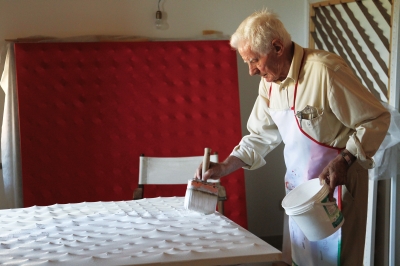
At his studio in Celleno, Italy
-
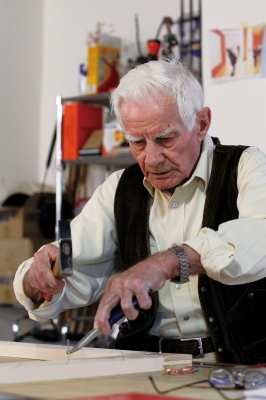
At work to create a surface
-
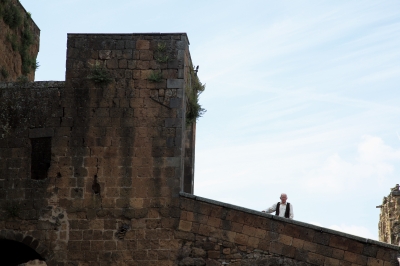
In his medieval castle, Celleno, Italy
-
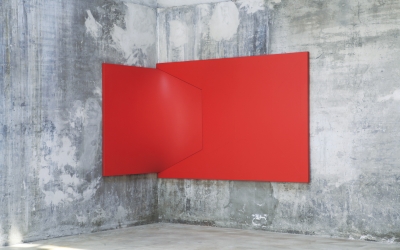
Dittico rosso, 1966
-
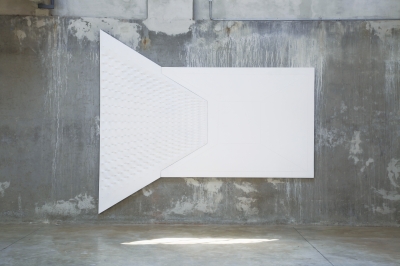
Dittico bianco, 1966
-
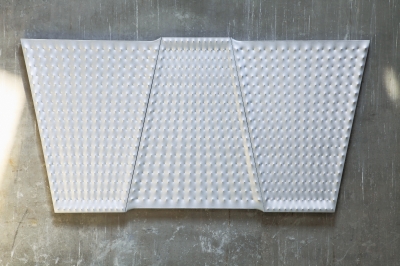
Trittico argento, 1966
-
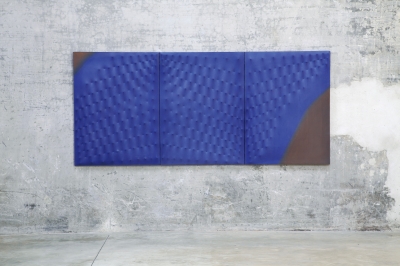
Trittico blu, 1971

